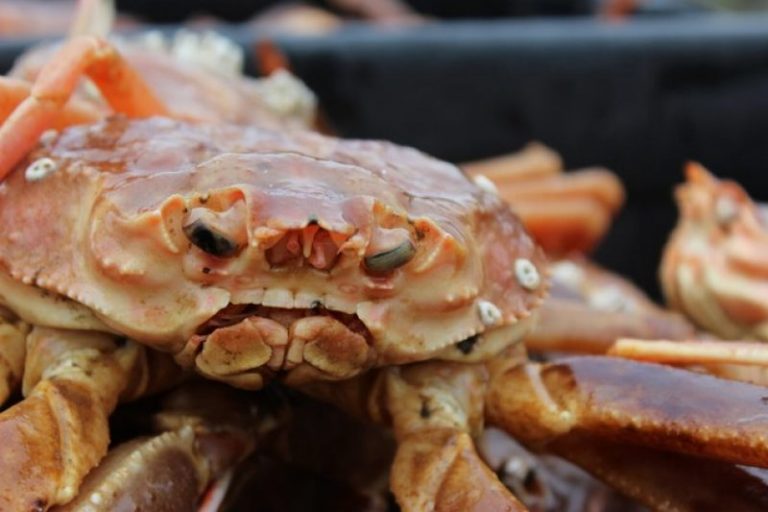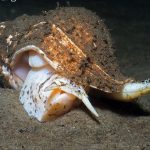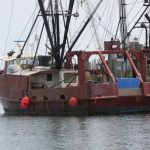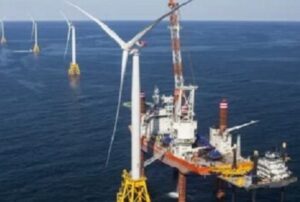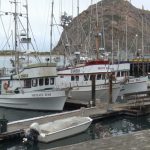Search Results for: CETA
Fishery fund ‘biggest sellout’: Paul Davis says Ball government gave up $300M
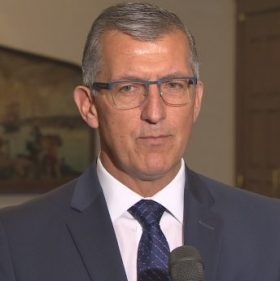 The Progressive Conservatives are calling an Atlantic fisheries fund that will direct $100-million to Newfoundland and Labrador a sellout. “It’s the biggest sellout in the history of the fishery,” said Opposition Leader Paul Davis who went on the attack in question period in the House of Assembly Tuesday. “This is nothing but a sellout to the federal government.” Davis complained that, in the fund announced Friday, the province settled for a fraction of what was contemplated under a trade agreement between Canada and Europe [CETA]. That $400-million dollar fund would have included $280 million from Ottawa, with the rest coming from the province. The money was demanded by the province as the CETA took shape in 2013 to compensate for giving up minimum processing requirements. read the story here 20:00
The Progressive Conservatives are calling an Atlantic fisheries fund that will direct $100-million to Newfoundland and Labrador a sellout. “It’s the biggest sellout in the history of the fishery,” said Opposition Leader Paul Davis who went on the attack in question period in the House of Assembly Tuesday. “This is nothing but a sellout to the federal government.” Davis complained that, in the fund announced Friday, the province settled for a fraction of what was contemplated under a trade agreement between Canada and Europe [CETA]. That $400-million dollar fund would have included $280 million from Ottawa, with the rest coming from the province. The money was demanded by the province as the CETA took shape in 2013 to compensate for giving up minimum processing requirements. read the story here 20:00
Atlantic Fisheries Fund: Atlantic Canada fish and seafood sector nets $325M from Ottawa
 The funding, called the Atlantic Fisheries Fund, was announced Friday by Fisheries, Oceans and Canadian Coast Guard Minister Dominic LeBlanc. According to a release, the fund has a focus “to drive innovation” in the sector. In 2015, the landed value for Canada’s Atlantic commercial fisheries was $2.8 billion. “The numbers speak for themselves,” LeBlanc told reporters, adding 58,000 people in Atlantic Canada are employed in the fishing industry. The government will work with the Atlantic provinces to determine how the fund will work. LeBlanc said the money would be available to all Atlantic provinces to be used in the ways they need. Read the rest of the story here 12:12 $100M for N.L. in new fisheries innovation fund; CETA fund dead Read the story here 17:30
The funding, called the Atlantic Fisheries Fund, was announced Friday by Fisheries, Oceans and Canadian Coast Guard Minister Dominic LeBlanc. According to a release, the fund has a focus “to drive innovation” in the sector. In 2015, the landed value for Canada’s Atlantic commercial fisheries was $2.8 billion. “The numbers speak for themselves,” LeBlanc told reporters, adding 58,000 people in Atlantic Canada are employed in the fishing industry. The government will work with the Atlantic provinces to determine how the fund will work. LeBlanc said the money would be available to all Atlantic provinces to be used in the ways they need. Read the rest of the story here 12:12 $100M for N.L. in new fisheries innovation fund; CETA fund dead Read the story here 17:30
The Sustainable Fisheries Act – January 11, 2000 revisited
February 21, 2017
I’ve been reviewing my past writings to gauge which, if any, have aged gracefully and which haven’t. I’ll be redistributing those that I think were particularly noteworthy, either because they were – and perhaps still are – on target or because they weren’t – or aren’t. The following addresses some of the more onerous provisions of the Sustainable Fisheries Act of 1996, which at the time were being fully implemented. I’ll leave it up to you to determine whether I hit this nail on the head or not. I’d be really interested to hear what you think.
Number 11
January 16, 2000
The Sustainable Fisheries Act, MSY and a consideration of ecological realities
It’s an accepted ecological principle that a given area of land or water under natural conditions, as long as the input of energy and other raw materials remains constant, will produce a relatively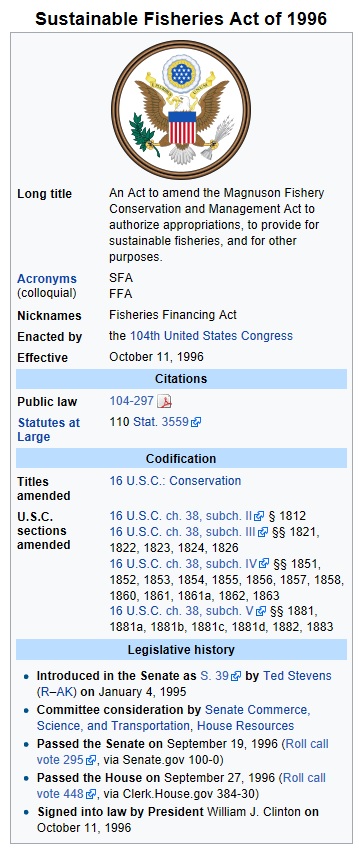 constant biomass over time. The form of that biomass – the species mix – can vary significantly, but the total amount will remain the same. Thus, without any major disturbances a square mile of woodland will produce the same amount of biomass year after year. The same can be said for a given area of wetland or estuary or coastal or offshore ocean. For example, minus any major changes in the amount of available energy (sunlight) or nutrients (from runoff and upwelling), the waters of the New York Bight will produce approximately the same tonnage of fish every year. Within that tonnage, however, the relative amounts of various species can vary tremendously.
constant biomass over time. The form of that biomass – the species mix – can vary significantly, but the total amount will remain the same. Thus, without any major disturbances a square mile of woodland will produce the same amount of biomass year after year. The same can be said for a given area of wetland or estuary or coastal or offshore ocean. For example, minus any major changes in the amount of available energy (sunlight) or nutrients (from runoff and upwelling), the waters of the New York Bight will produce approximately the same tonnage of fish every year. Within that tonnage, however, the relative amounts of various species can vary tremendously.
In particular areas, many of the commercially and recreationally important fish species occupy similar or overlapping niches (a niche is most simply defined as an ecological address). That is, they are found in the same areas at the same times, they pursue the same prey, are pursued by the same predators and likely feed on each other’s young. To a large extent they can be considered in competition with each other for space, food and shelter. In some years there will be a large number of a particular species and, because of the ecological limits on the area’s ability to support total biomass, lessened numbers of the “competing” species. In the New York Bight we will have periods when bluefish are extremely plentiful and striped bass and weakfish aren’t, or, as has been the case for the last three or four years, there will be striped bass all over, a large population of fluke, and relatively few bluefish. The populations of particular fish species cycle over time in a particular area, but the total biomass at a particular trophic level remains relatively constant.
The Maximum Sustainable Yield (MSY) of a fish species or stock must necessarily be considered to be the harvest from that stock or species when its population is at or approaching its peak. Thus, the MSY for bluefish in the Mid-Atlantic is determined based on the biomass of bluefish available when the population was at its highest level. Ditto for weakfish, for striped bass, for fluke, etc. But it’s important to note that the years of peak production of these species didn’t, and in fact couldn’t, coincide. The natural production limits of the system (sunlight and nutrients) simply wouldn’t allow it.
Under the provisions of the federal Sustainable Fisheries Act (SFA), at any point when the populations of each of these competing species aren’t at MSY they are considered to be “overfished” and stringent harvest restrictions implementing strict rebuilding schedules (to MSY) are mandated. By requiring that all species be at their MSY, our coastal waters are expected in the SFA to support a level of overall production that is ecologically impossible, and fishermen, both recreational and commercial, are expected to reduce their catch to meet this impossible standard.
Species by species management – an idea whose time has gone?
The species-by-species management philosophy that became law with the Magnuson Act in 1976 has proved to be predictably ineffectual. This is, as far as we can tell, the reason why the New England Fishery Management Council voted for a dogfish harvest of over 20 million pounds while the Mid-Atlantic Council, using the same data and managing under the same guidelines, has voted to virtually close the fishery down, allowing less than 3 million pounds to be harvested. At this point dogfish are among the most abundant fish in the waters off New England and the Mid-Atlantic. They are so numerous that in the most recent survey conducted by the National Marine Fisheries Service in the waters extending from Cape Hatteras to Canada, dogfish made up over 40% by weight of all of the fish taken (See Of Dogfish and overfishing and productive capacity at http://www.fishingnj.org/netusa7.htm). The New England council members realize that if the already huge biomass of dogfish is allowed to build up to even higher levels, it will do so at the expense of “competing” and much more desirable/valuable/depleted species like cod and haddock. They have tried to act accordingly by recommending the continuation of the dogfish fishery at a reduced yet significant level of harvest. (This week the Secretary of Commerce approved the Dogfish FMP including the disturbingly low quotas, but has directed a reevaluation of the plan’s assumptions that were used to set them.)
This isn’t just a management issue. As the provisions of the Sustainable Fisheries Act come into play over the next year, and as other fisheries are determined to be below MSY, along with the financial devastation of many fishing businesses we will be faced with the loss of critical industry infrastructure that, considering development demands in coastal areas, will never be replaced. And all because we won’t be able to meet the biologically impossible goal of having numerous species at their MSY level simultaneously.
Exacerbating this situation are several other factors that might well have led to unnaturally high levels of production for particular species in the past, consequently generating even more inflated expectations of MSY.
Culminating in the 1970s or early 1980s, we had significantly “enriched” our inshore and coastal waters with untreated (or lightly treated) municipal and industrial wastewater. While some of these effluents were toxic, many were composed primarily of nutrients which might very possibly have increased the ability of the receiving waters to produce fish and shellfish. And until fairly recently we had significantly reduced the populations of cetaceans (whales, dolphins, etc.) and pinnipeds (seals and sea lions) in all of the world’s oceans. These animals are very efficient predators of many of the same fish species that we harvest, or of the species that those species prey upon.
Since then we have spent billions of dollars to reduce the amount of point-source pollutants – including uncounted tons of nutrients – entering our estuarine and coastal waters, very possibly decreasing overall biomass production in these waters (see Managing The Waterways — Too Clean For The Fish? by Alan Mearns, Lincoln Loehr and Herbet Curl. The Seattle Times. July 19, 1998). Interestingly, it’s now thought that a recent upswing in biological production in the Mediterranean is most probably due to “fertilization” attributable to coastal development there. At the same time, marine mammal predation on fish and shellfish has increased dramatically as their populations have increased because of the mandates of the Marine Mammal Protection Act in the U.S. and similar legislation and regulations in other countries. We’ve also seen the unintended and uncontrolled spread of toxic materials (herbicides, pesticides, petroleum products, etc.) in every oceanic or estuarine area that has been sampled. Finally, we’ve lost – and continue to lose – significant amounts of our coastal wetlands to development, and with them we’ve lost a corresponding amount of what is vital spawning and nursery habitat for 70% of our economically important fish species. The expectation is that if we manage our fisheries correctly (meaning if we restrict harvesting rigorously enough) we can return them to levels of abundance that were commonplace several decades back. The reality is that, regardless of how stringently we control harvesting, those levels are no longer reachable.
A simple fix
It appears as if, with good intentions, the Congress of the United States has painted recreational and commercial fishermen into an ecological corner. Individual fish stocks are required by federal legislation to be returned to probably unreachable levels of former abundance (given yesterday’s sparsely developed coastlines, nutrient-rich effluents and paucity of marine mammals, and today’s abundance of marine mammals, cleaner waters and the ongoing exodus from inland areas to the coasts), and they are all required to be at those levels simultaneously. That’s far beyond the productive capacities of the involved ecosystems, but in spite of that, when it doesn’t happen more stringent management measures will be imposed on the commercial and recreational fishing industries. And this will all be going on while many fisheries are satisfactorily rebuilding towards or are already at high levels of abundance.
The immediate problem, that of drastically reducing fishing effort when impossible-to-achieve population levels aren’t reached, could be easily solved by requiring that we manage stocks of fish in naturally occurring assemblages rather than on a species-by-species basis. Instead of futilely attempting to simultaneously return all managed fish species to peak levels of abundance, we should recognize that natural ecosystems have limitations and we should give our managers the flexibility to work within the constraints imposed by those limitations. We can’t have an ocean that is filled with maximum amounts of dogfish, cod and haddock, or fluke, bluefish and weakfish all at the same time. We should recognize this and start to manage for a balance of species, with the balance determined by economic and social factors as well as the “natural order.” Logic would dictate that, considering their recreational and commercial demand, New England’s codfish are much too valuable to allow their rebuilding to be retarded in order to have an ocean even more fully populated by dogfish. But that’s what we’re being forced to do today, and our coastal communities will pay tens of millions of dollars if we don’t fix it.
Sustainable Fisheries Act image credit https://en.wikipedia.org/wiki/Sustainable_Fisheries_Act_of_1996
Ottawa to invest in ‘fisheries innovation’ for Atlantic Canada following EU trade deal
 With Canada’s trade deal with the European Union on track to come into force provisionally within weeks, the federal government is set to announce a new fisheries innovation fund. But don’t portray this new money as a way to compensate Atlantic Canada, Fisheries Minister Dominic LeBlanc told CBC News last week. “I didn’t say compensation. That was your word,” LeBlanc said after an announcement in Vancouver last week. “What I said is that we’re prepared to work with provinces to look for a way to make our fishing industry the most innovative, productive, sustainable and globally competitive that we can.” Compensation was what Newfoundland and Labrador was looking for in the face of the Comprehensive Economic and Trade Agreement (CETA), which will prevent Canadian provinces from placing any export restrictions on raw fish. Continue reading the story here 08:58
With Canada’s trade deal with the European Union on track to come into force provisionally within weeks, the federal government is set to announce a new fisheries innovation fund. But don’t portray this new money as a way to compensate Atlantic Canada, Fisheries Minister Dominic LeBlanc told CBC News last week. “I didn’t say compensation. That was your word,” LeBlanc said after an announcement in Vancouver last week. “What I said is that we’re prepared to work with provinces to look for a way to make our fishing industry the most innovative, productive, sustainable and globally competitive that we can.” Compensation was what Newfoundland and Labrador was looking for in the face of the Comprehensive Economic and Trade Agreement (CETA), which will prevent Canadian provinces from placing any export restrictions on raw fish. Continue reading the story here 08:58
Domoic Acid raises its ugly head again…crab fishing closure
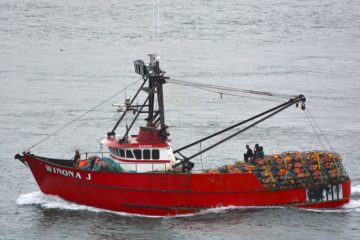 Commercial crabbing closed from Coos Bay north jetty to Heceta Head due to domoic acid The Oregon Department of Agriculture and the Oregon Department of Fish and Wildlife announce the closure of the commercial crab fishery from the north jetty of Coos Bay to Heceta Head, just south of Yachats, due to elevated levels of domoic acid in crab viscera. The area is also closed to recreational harvest. Crab meat remains safe for consumption. Domoic acid levels are elevated only in crab viscera, or the guts, of crab sampled and tested from this area of the Oregon coast. The closure is limited to that portion of the central coast. Areas south of Coos Bay and north of Heceta Head remain open to commercial crabbing. Read the story here 07:38
Commercial crabbing closed from Coos Bay north jetty to Heceta Head due to domoic acid The Oregon Department of Agriculture and the Oregon Department of Fish and Wildlife announce the closure of the commercial crab fishery from the north jetty of Coos Bay to Heceta Head, just south of Yachats, due to elevated levels of domoic acid in crab viscera. The area is also closed to recreational harvest. Crab meat remains safe for consumption. Domoic acid levels are elevated only in crab viscera, or the guts, of crab sampled and tested from this area of the Oregon coast. The closure is limited to that portion of the central coast. Areas south of Coos Bay and north of Heceta Head remain open to commercial crabbing. Read the story here 07:38
FFAW president hopes Canada-EU trade talks aren’t finished
 The head of Newfoundland and Labrador’s largest private-sector union said he’s disappointed that Canada-EU trade talks have fallen apart. “It’s preliminary, but it doesn’t certainly look good for (the Comprehensive Economic and Trade Agreement) in its current form right now,” Keith Sullivan, president of the Fish, Food and Allied Workers union told CBC on Friday. International Trade Minister Chrystia Freeland walked out of talks Friday with the regional government of Wallonia, which has been blocking the deal, due to be signed next week. Sullivan told CBC the deal as it stood was a “mixed bag” for Canadian workers, but he thought there was potential benefit for the fishing industry. “There was certainly an area where people saw some opportunities where they could get decreased tariffs on some products like shrimp and crab, and that was an opportunity for some people,” he said. “So it was certainly mixed, but it might be all for nothing now.” Read the rest here 12:09
The head of Newfoundland and Labrador’s largest private-sector union said he’s disappointed that Canada-EU trade talks have fallen apart. “It’s preliminary, but it doesn’t certainly look good for (the Comprehensive Economic and Trade Agreement) in its current form right now,” Keith Sullivan, president of the Fish, Food and Allied Workers union told CBC on Friday. International Trade Minister Chrystia Freeland walked out of talks Friday with the regional government of Wallonia, which has been blocking the deal, due to be signed next week. Sullivan told CBC the deal as it stood was a “mixed bag” for Canadian workers, but he thought there was potential benefit for the fishing industry. “There was certainly an area where people saw some opportunities where they could get decreased tariffs on some products like shrimp and crab, and that was an opportunity for some people,” he said. “So it was certainly mixed, but it might be all for nothing now.” Read the rest here 12:09
Grounded F/V Ms. Nicani returns to sea
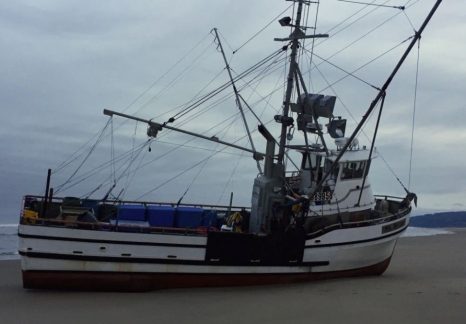 The sight of a large fishing boat grounded on the beach drew spectators to Heceta Beach near the Siuslaw River North Jetty over the weekend. The 50-foot commercial fishing vessel Ms. Nicani ran aground early Saturday morning at Heceta Beach between the North Jetty and Driftwood Shores Resort, while returning to Florence after tuna fishing. The vessel, owned by Florence resident Terry Duman, ran aground just after 2 a.m., Sept. 17. U.S. Coast Guard Sr. Chief Boatswains Mate Tim Tregoning said, “The Coast Guard assisted the crew in setting a stern anchor to make sure the boat would not be pushed farther up onto the beach. Read the story here 08:09
The sight of a large fishing boat grounded on the beach drew spectators to Heceta Beach near the Siuslaw River North Jetty over the weekend. The 50-foot commercial fishing vessel Ms. Nicani ran aground early Saturday morning at Heceta Beach between the North Jetty and Driftwood Shores Resort, while returning to Florence after tuna fishing. The vessel, owned by Florence resident Terry Duman, ran aground just after 2 a.m., Sept. 17. U.S. Coast Guard Sr. Chief Boatswains Mate Tim Tregoning said, “The Coast Guard assisted the crew in setting a stern anchor to make sure the boat would not be pushed farther up onto the beach. Read the story here 08:09
Department of Fisheries and Oceans’ last in, first out (LIFO) is working exactly as planned
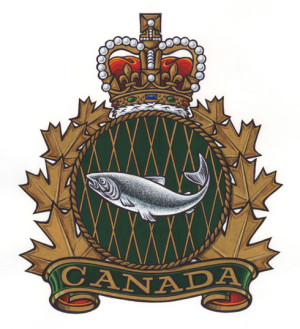 LIFO was never intended to have a long shelf life. Its purpose was and is to pave the way for what has been in the planning and negotiating stage for a long time now, and which is designed to replace it — the Comprehensive Economic Trade Agreement (CETA) with the European Union. Between now and when that trade agreement is ratified, LIFO will help force inshore fishers, processors, plant workers, coastal communities and out of the fishery — and the province of Newfoundland and Labrador is about to take a $280-million bribe to help grease the wheels. LIFO is merely a symptom, a precursor if you will, to CETA. Read the rest here 08:40
LIFO was never intended to have a long shelf life. Its purpose was and is to pave the way for what has been in the planning and negotiating stage for a long time now, and which is designed to replace it — the Comprehensive Economic Trade Agreement (CETA) with the European Union. Between now and when that trade agreement is ratified, LIFO will help force inshore fishers, processors, plant workers, coastal communities and out of the fishery — and the province of Newfoundland and Labrador is about to take a $280-million bribe to help grease the wheels. LIFO is merely a symptom, a precursor if you will, to CETA. Read the rest here 08:40
Crab Fishermen Trained as ‘First Responders’ for Entangled Whales
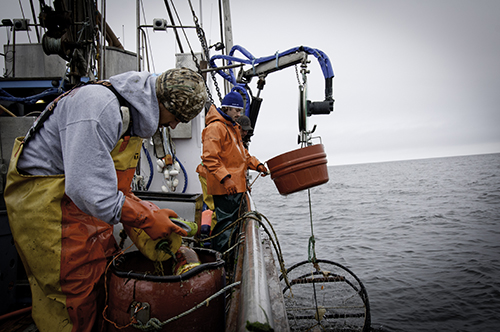 Crab season means more Dungeness crab on Bay Area menus, but it could also mean more injured whales. The cetaceans get entangled in crab trap lines, which is why the federal government is teaching crabbers to become first responders. Geoff Bettencourt is a fourth-generation fisherman. From his boat, The Moriah Lee, he points to an area in Half Moon Bay. “The whales have been so thick in here. Like close, where they’ve never ever been,” says Bettencourt. Listen, and read the rest here 20:26
Crab season means more Dungeness crab on Bay Area menus, but it could also mean more injured whales. The cetaceans get entangled in crab trap lines, which is why the federal government is teaching crabbers to become first responders. Geoff Bettencourt is a fourth-generation fisherman. From his boat, The Moriah Lee, he points to an area in Half Moon Bay. “The whales have been so thick in here. Like close, where they’ve never ever been,” says Bettencourt. Listen, and read the rest here 20:26
Pseudo Swashbuckler Sea Shepherds to Pay Millions to Japanese Whale Fleet
 Sea Shepherd Conservation Society agreed to pay $2.55 million to Japan’s Institute of Cetacean Research on Monday as part of a settlement to resolve a long-standing legal battle over the anti-whaling group’s tactics against Japanese whaling ships in the Antarctic.The settlement came the same day the U.S. Supreme Court refused to hear Sea Shepherd’s appeal of a federal court’s finding that the group was in contempt of a court order to stay clear of Japanese whaling ships. Read the rest here 21:48
Sea Shepherd Conservation Society agreed to pay $2.55 million to Japan’s Institute of Cetacean Research on Monday as part of a settlement to resolve a long-standing legal battle over the anti-whaling group’s tactics against Japanese whaling ships in the Antarctic.The settlement came the same day the U.S. Supreme Court refused to hear Sea Shepherd’s appeal of a federal court’s finding that the group was in contempt of a court order to stay clear of Japanese whaling ships. Read the rest here 21:48
Endangered and Threatened Species: Critical Habitat for Endangered North Atlantic Right Whale-Proposed rule; request for comments.
 We, the NMFS, propose to replace the critical habitat for right whales in the North Atlantic with two new areas. The areas under consideration as critical habitat contain approximately 29,945 nm 2 of marine habitat in the region (Unit 1) and off the Southeast U.S. coast (Unit 2). We have considered positive and negative economic, national security, and other relevant impacts of the proposed critical habitat. We do not propose to exclude any particular area from the proposed critical habitat. Read the rest here 14:10
We, the NMFS, propose to replace the critical habitat for right whales in the North Atlantic with two new areas. The areas under consideration as critical habitat contain approximately 29,945 nm 2 of marine habitat in the region (Unit 1) and off the Southeast U.S. coast (Unit 2). We have considered positive and negative economic, national security, and other relevant impacts of the proposed critical habitat. We do not propose to exclude any particular area from the proposed critical habitat. Read the rest here 14:10
Feds approve fish pots to outsmart opportunistic whales – Dungeness Gear Works is ready to deliver!
 Gulf of Alaska whales that dine on hooked black cod are likely to find slimmer pickings in the years ahead. Under a measure approved late Sunday by the NPFMC, fishermen will be free to ditch their longline gear that frequently lose the fish to killer and sperm whales. The fishermen now will be permitted to use pots that trap — rather than hook — the bottom-dwelling fish, and then protect the catch from hungry cetaceans as it’s brought to the surface. Read the rest here, and NPFMC OKs pots to deter whales here 17:32
Gulf of Alaska whales that dine on hooked black cod are likely to find slimmer pickings in the years ahead. Under a measure approved late Sunday by the NPFMC, fishermen will be free to ditch their longline gear that frequently lose the fish to killer and sperm whales. The fishermen now will be permitted to use pots that trap — rather than hook — the bottom-dwelling fish, and then protect the catch from hungry cetaceans as it’s brought to the surface. Read the rest here, and NPFMC OKs pots to deter whales here 17:32
NEFSC Conducting Protected Species Program Review April 13-16 in Woods Hole, MA
 Science programs at NOAA’s Northeast Fisheries Science Center that support protected species conservation and management in the Northeast will be peer reviewed at the Center’s facility in Woods Hole, MA April 13-16, 2015. The species involved include whales, small cetaceans, seals, and sea turtles, as well as fish populations that fall under provisions of the federal Endangered Species Act. Click here for more information on the meeting, including logistics and meeting materials. Read the notice here 13:46
Science programs at NOAA’s Northeast Fisheries Science Center that support protected species conservation and management in the Northeast will be peer reviewed at the Center’s facility in Woods Hole, MA April 13-16, 2015. The species involved include whales, small cetaceans, seals, and sea turtles, as well as fish populations that fall under provisions of the federal Endangered Species Act. Click here for more information on the meeting, including logistics and meeting materials. Read the notice here 13:46Operator: Stranded Eco Tour Boat Was in Restricted Area
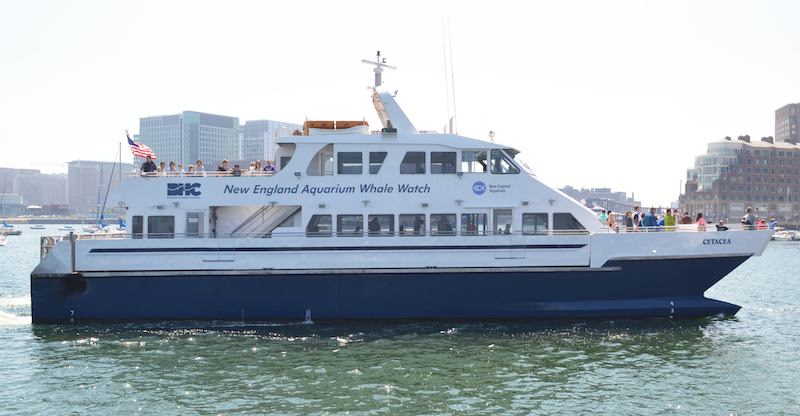 A group of whale watchers expecting only an afternoon tour were forced instead to spend a long night at sea after their boat was snagged by a mooring cable off Massachusetts, officials and passengers said Tuesday. Passengers will receive a refund on their $50 ticket, a $100 gift card for a future Boston Harbor Cruise and $500 cash for their troubles! Read more here 10:53
A group of whale watchers expecting only an afternoon tour were forced instead to spend a long night at sea after their boat was snagged by a mooring cable off Massachusetts, officials and passengers said Tuesday. Passengers will receive a refund on their $50 ticket, a $100 gift card for a future Boston Harbor Cruise and $500 cash for their troubles! Read more here 10:53
Costa Rica: Tuna company, fishermen and environmental groups squabble over unpublished fishing decree
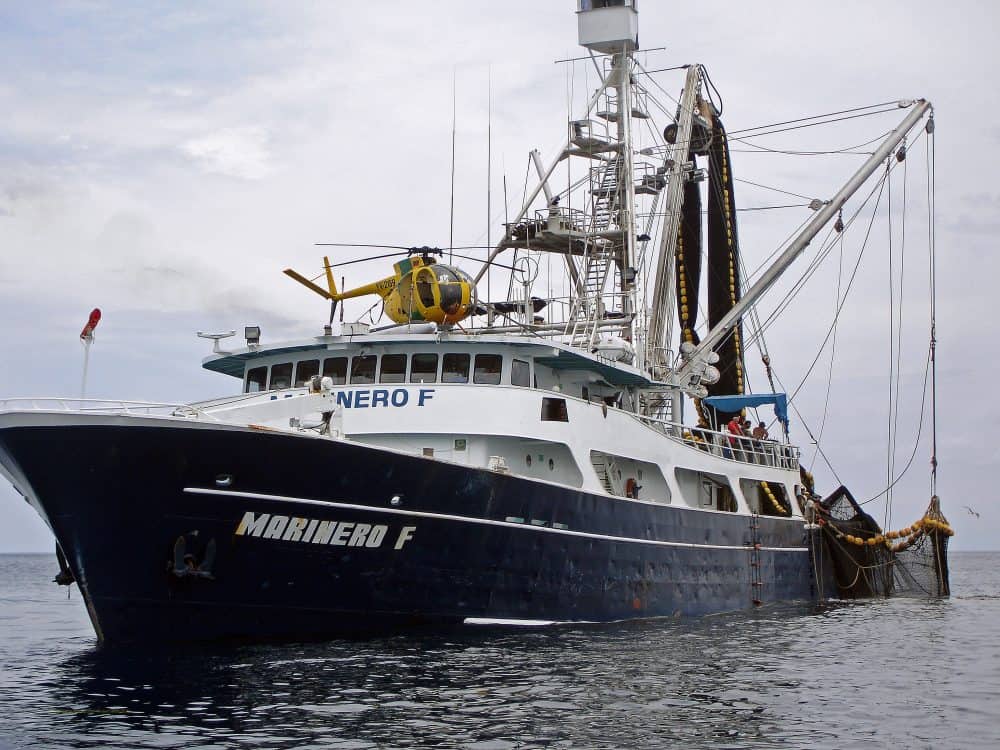 Expected restrictions on industrial tuna fishing have been stalled pending the publication of a decree signed by former President Laura Chinchilla (2010-2014). Though Chinchilla signed the decree, it does not officially become law until it is published in the official government newspaper, La Gaceta. Chinchilla failed to give a publishing order before she left office,,, Read more here 10:18
Expected restrictions on industrial tuna fishing have been stalled pending the publication of a decree signed by former President Laura Chinchilla (2010-2014). Though Chinchilla signed the decree, it does not officially become law until it is published in the official government newspaper, La Gaceta. Chinchilla failed to give a publishing order before she left office,,, Read more here 10:18
Viewed as necessary for the betterment of the country? Newfoundland’s place in the Comprehensive Economic Trade Agreement
![]() One of the more contentious issues related to CETA is the impact it may have on the province’s fish processing industry. CETA may reduce the 11 – 25 per cent tariffs on Canadian fish products creating the incentive to avoid value-added processing in the country. The agreement will not protect…Read more here. The Muse 06:56
One of the more contentious issues related to CETA is the impact it may have on the province’s fish processing industry. CETA may reduce the 11 – 25 per cent tariffs on Canadian fish products creating the incentive to avoid value-added processing in the country. The agreement will not protect…Read more here. The Muse 06:56
Just pawns in the province’s game – It’s an interesting window into an unsettled future for the Newfoundland fishery.
 Late last week, the provincial government released a series of documents on the province’s involvement in the Comprehensive Economic and Trade Agreement (CETA) with the European Union. Premier Kathy Dunderdale had promised to table the documents, which show primarily that the province played the role of dog-in-the-manger to wring federal concessions in exchange for agreeing to drop minimum processing regulations (MPRs) for fish going to the EU. What’s interesting is the change in the provincial government’s view of the impact of the removal of MPRs. After they were dropped, Premier Dunderdale went as far as to say not a single job would be lost as a result of the deal. Later, she tempered that by saying only a limited number of jobs would be lost. more@stjohnstelegram 16:28
Late last week, the provincial government released a series of documents on the province’s involvement in the Comprehensive Economic and Trade Agreement (CETA) with the European Union. Premier Kathy Dunderdale had promised to table the documents, which show primarily that the province played the role of dog-in-the-manger to wring federal concessions in exchange for agreeing to drop minimum processing regulations (MPRs) for fish going to the EU. What’s interesting is the change in the provincial government’s view of the impact of the removal of MPRs. After they were dropped, Premier Dunderdale went as far as to say not a single job would be lost as a result of the deal. Later, she tempered that by saying only a limited number of jobs would be lost. more@stjohnstelegram 16:28
There is some market for cod on the south coast, after months with none – The Fisheries Broadcast
 Did the Europeans ask Canada to relax restrictions around ownership of harvesting licences as part of CETA? listen@cbc 16:04
Did the Europeans ask Canada to relax restrictions around ownership of harvesting licences as part of CETA? listen@cbc 16:04
Unprecedented Dolphin Die Off Witnessed Along Eastern US Coast
 The National Oceanic and Atmospheric Administration (NOAA) announced unsettling and unfortunate news this week centered on the bottlenose dolphin and Cetacean populations on the east coast of the United States. We are witnessing the most unprecedented stranding and die-off of these creatures in our recorded history. more@redorbit 10:47
The National Oceanic and Atmospheric Administration (NOAA) announced unsettling and unfortunate news this week centered on the bottlenose dolphin and Cetacean populations on the east coast of the United States. We are witnessing the most unprecedented stranding and die-off of these creatures in our recorded history. more@redorbit 10:47
Duty Free Canadian Fish Products to the EU – Good for Nova Scotia? Trade deal could kill the seafood processing industry.
![]() “The details aren’t completely clear as to exactly what it will mean to the fisheries in Nova Scotia. We have heard certain things about European boats having access to Canadian waters,” said Angela Giles, Atlantic regional organizer for the Canadian Centre for Policy Alternative. more@cbcnews 09:16
“The details aren’t completely clear as to exactly what it will mean to the fisheries in Nova Scotia. We have heard certain things about European boats having access to Canadian waters,” said Angela Giles, Atlantic regional organizer for the Canadian Centre for Policy Alternative. more@cbcnews 09:16
The Fisheries Broadcast with John Furlong
 Monday June 3, 2013 – Genetically modified salmon, engineered to grow faster, Friday May 31, 2013 – More reaction to the issue of the CETA talks, Thursday May 30, 2013 – Reaction to the premier’s comment about Minimum Processing Requirements, and more here Listen Live – Weekdays 5:30 p.m. NT/ 4:00 Eastern @ CBC Radio One
Monday June 3, 2013 – Genetically modified salmon, engineered to grow faster, Friday May 31, 2013 – More reaction to the issue of the CETA talks, Thursday May 30, 2013 – Reaction to the premier’s comment about Minimum Processing Requirements, and more here Listen Live – Weekdays 5:30 p.m. NT/ 4:00 Eastern @ CBC Radio One
More humpbacks could cause problems by Ed Schoenfeld, CoastAlaska News (audio)
There’s a baby boom going on with Alaska’s humpback whales. Slow-but-steady population growth is good news for the species, as well as whale-watchers. But it could be bad news for boaters, hatcheries and the herring fleet. The healthy population was visible during a boat tour held as part of the Sitka WhaleFest Science Symposium, held Nov. 1-4. “There’s a few more whales further out. http://www.kcaw.org/2012/12/01/more-humpbacks-could-cause-problems/
Eco-Lawsuit Advances against Cape Wind Risk to Right Whale and other Threatened and Endangered Species Litigated
NOTE. Links will be added as they become available. http://www.milforddailynews.com/news/x493268917/Suit-claims-Cape-Wind-violates-endangered-species-law
Hyannis, Mass. (October 10, 2012) – Public Employees for Environmental Responsibility (PEER), the Alliance to Protect Nantucket Sound and other conservation groups today filed a brief in U.S. District Court for the District of Columbia detailing Cape Wind’s numerous violations of federal protections for threatened and endangered species – including the imperiled North Atlantic right whale, one of the rarest mammals in the world. This suit charges the project violates three key federal laws – the Endangered Species Act, the Migratory Bird Treaty Act and the National Environmental Policy Act.
Other plaintiffs include the Cetacean Society International, Lower Laguna Madre Foundation, Californians for Renewable Energy, and Three Bays Preservation. This is one of five federal lawsuits facing Cape Wind, a massive industrial project proposed to cover 25 square miles of Nantucket Sound with an array of 130 massive turbines – each stretching taller than the Statue of Liberty.
Today’s brief explains how the mega-project poses serious risks to the right whale, four species of federally-protected sea turtles and several species of migratory birds. It also criticizes the lack of oversight and analysis of the impact of Cape Wind on this critical habitat.







 In 2012, well known radio and TV host Howard Stern announced he had become a pescetarian. Fish became the outspoken personality’s primary source of protein as he embarked on a new and healthier lifestyle. Three years later the baseless rhetoric spewed by groups bent on distorting seafood’s inherently healthy building blocks has Stern confused. On his show Stern recently noted his own mercury levels with concern. What he didn’t note is that there has never been a single case of mercury poisoning from the normal consumption of commercial seafood,,,
In 2012, well known radio and TV host Howard Stern announced he had become a pescetarian. Fish became the outspoken personality’s primary source of protein as he embarked on a new and healthier lifestyle. Three years later the baseless rhetoric spewed by groups bent on distorting seafood’s inherently healthy building blocks has Stern confused. On his show Stern recently noted his own mercury levels with concern. What he didn’t note is that there has never been a single case of mercury poisoning from the normal consumption of commercial seafood,,, About 50 mysterious baleen whales live in an underwater canyon off the Florida Panhandle, making them the only resident baleen whales, aka great whales, in the Gulf of Mexico. Several other baleen species visit the Gulf, but these 50 leviathans are the only ones known to live there year-round. But new genetic testing suggests the 50 Gulf whales might be a distinct subspecies of Bryde’s — or a new species altogether. If so,,,
About 50 mysterious baleen whales live in an underwater canyon off the Florida Panhandle, making them the only resident baleen whales, aka great whales, in the Gulf of Mexico. Several other baleen species visit the Gulf, but these 50 leviathans are the only ones known to live there year-round. But new genetic testing suggests the 50 Gulf whales might be a distinct subspecies of Bryde’s — or a new species altogether. If so,,, 


























